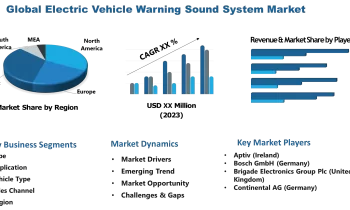Mergers and acquisitions (M&A) are critical strategies for companies looking to grow, diversify, or gain a competitive edge in their market. However, preparing for an M&A transaction is a complex process that requires careful planning, due diligence, and strategic decision-making. For middle-market firms, the stakes are even higher, as they must navigate the intricacies of a transaction while ensuring their business continues to operate smoothly. This comprehensive guide will provide actionable steps on how to prepare your business for a successful M&A transaction.
Introduction: Why Preparation is Key to a Successful M&A
Preparing for a merger or acquisition is a daunting task, but it is a crucial step that can determine the success or failure of the entire transaction. Many businesses mistakenly believe that the M&A process begins when they identify a potential buyer or seller. However, the preparation phase starts much earlier and involves a thorough evaluation of the company’s financial health, operational readiness, and strategic goals.
A well-prepared company can streamline the M&A process, minimize risks, and achieve favorable terms. In contrast, a lack of preparation can lead to unforeseen complications, delays, or even a failed transaction. This guide will walk you through the essential steps to ensure your business is ready for a successful M&A transaction, from assessing your company’s readiness to choosing the right advisors.
Assess Your Business’s M&A Readiness
The first step in preparing for an M&A transaction is to conduct a comprehensive assessment of your business’s readiness. This involves evaluating your financial health, operational efficiency, market position, and growth potential. Understanding where your company stands in these areas will help you determine if an M&A is the right strategic move.
For instance, consider whether your business has a solid financial foundation. Do you have clear, accurate, and up-to-date financial statements? Are your revenue streams stable and predictable? Are there any outstanding debts or liabilities that could complicate the transaction? Answering these questions will give you a better idea of your company’s financial position and help you identify areas that need improvement before pursuing an M&A.
Additionally, assessing your business’s operational efficiency is crucial. Are there any inefficiencies in your processes that could reduce the attractiveness of your business to potential buyers? Streamlining operations and demonstrating a well-run business can significantly increase your company’s valuation and make it more appealing in an M&A transaction.
Develop a Clear Strategic Plan
Once you have assessed your business’s readiness, the next step is to develop a clear strategic plan for the M&A transaction. This plan should outline your goals, objectives, and the criteria for a successful merger or acquisition. Consider what you hope to achieve through the M&A—whether it’s expanding your market reach, gaining access to new technology, or consolidating operations to reduce costs.
Having a strategic plan helps to align your team, clarify your intentions to potential buyers or sellers, and serve as a roadmap throughout the M&A process. It also enables you to identify the type of partner that aligns with your business’s goals and values. For example, if your goal is to expand into new geographic markets, you might seek a partner with an established presence in those areas.
Additionally, a well-defined plan can help you determine whether you need to hire a professional M&A advisory for middle-market firms to guide you through the process. These advisors bring valuable experience and insights, helping you navigate complex negotiations, conduct due diligence, and secure favorable terms.
Assemble a Skilled M&A Team
Assembling a skilled M&A team is one of the most important steps in preparing for a successful transaction. This team should include key internal stakeholders such as senior management, finance, legal, and operations leaders, as well as external experts like accountants, lawyers, and M&A advisors.
The internal team will play a critical role in ensuring that the company’s day-to-day operations continue smoothly during the M&A process. They will also provide valuable insights into the company’s strengths, weaknesses, and growth opportunities, which are essential for developing a compelling narrative for potential buyers or sellers.
External experts bring specialized knowledge and experience to the table. For example, a professional M&A advisory for middle-market firms can help you navigate the complexities of the transaction, identify potential risks, and develop strategies to mitigate them. Additionally, working with the best investment bank for M&A transactions can provide access to a broader network of potential buyers or sellers, as well as expertise in deal structuring and negotiation.
Optimize Your Financial Statements
A successful M&A transaction requires accurate, transparent, and comprehensive financial statements. Potential buyers or sellers will scrutinize your financials to assess your company’s value, profitability, and risk profile. Therefore, it is crucial to ensure that your financial statements are up-to-date, accurate, and compliant with accounting standards.
Start by conducting a thorough audit of your financials, including income statements, balance sheets, and cash flow statements. Identify any discrepancies, outstanding debts, or liabilities that could impact the transaction. Consider hiring an external auditor to provide an independent assessment of your financial health and address any potential issues before entering negotiations.
Additionally, consider how your financial statements will be presented to potential buyers or sellers. Highlight key performance indicators (KPIs) such as revenue growth, profitability, and return on investment (ROI) that demonstrate the value of your business. Clear, concise, and well-organized financial statements can enhance your credibility and strengthen your negotiating position.
Conduct a Thorough Due Diligence
Due diligence is a critical step in the M&A process that involves a comprehensive review of all aspects of your business, from financials and operations to legal and regulatory compliance. The goal is to identify any potential risks, liabilities, or issues that could impact the transaction.
Conducting due diligence allows you to address any red flags before they become deal-breakers. It also demonstrates transparency and builds trust with potential buyers or sellers. Make sure to document all findings and take corrective actions where necessary. This process should cover all areas of your business, including:
- Financial due diligence: Review all financial statements, tax returns, debt obligations, and revenue streams.
- Operational due diligence: Assess the efficiency and effectiveness of your operations, supply chain, and distribution channels.
- Legal due diligence: Verify compliance with all relevant laws, regulations, and contractual obligations.
- Human resources due diligence: Review employee contracts, benefits, and any potential liabilities related to labor disputes or claims.
Working with the best investment bank for M&A transactions can help streamline the due diligence process by providing access to experienced professionals who specialize in identifying potential risks and mitigating them.
Enhance Operational Efficiency
Operational efficiency is a key driver of value in an M&A transaction. Buyers are often looking for businesses that are well-managed, cost-effective, and capable of generating consistent revenue. Therefore, enhancing your operational efficiency is critical to preparing your business for a successful M&A transaction.
Start by identifying areas of your operations that are underperforming or inefficient. This could include production processes, supply chain management, customer service, or technology infrastructure. Implement strategies to streamline these operations, reduce costs, and improve overall performance.
Consider investing in technology solutions that automate routine tasks, improve data accuracy, and enhance decision-making. Additionally, develop a strong operational team that is capable of driving performance improvements and demonstrating the company’s growth potential to potential buyers.
Build a Compelling Narrative
A compelling narrative is essential to attract potential buyers or sellers and increase the value of your business in an M&A transaction. This narrative should highlight your company’s strengths, market position, growth potential, and strategic vision. It should also address any potential concerns or risks and demonstrate how your business is poised for future success.
Work with your M&A team to craft a clear, concise, and persuasive narrative that aligns with your strategic goals and resonates with potential buyers or sellers. Use data and metrics to back up your claims, and be prepared to answer any questions or concerns that may arise during negotiations.
Choose the Right Advisors
Selecting the right advisors is crucial to ensuring a successful M&A transaction. An experienced professional M&A advisory for middle-market firms can provide valuable insights, guidance, and support throughout the process. They can help you navigate complex negotiations, conduct due diligence, and secure favorable terms.
Similarly, partnering with the best investment bank for M&A transactions can provide access to a broader network of potential buyers or sellers, as well as expertise in deal structuring and financing. These advisors bring a wealth of experience and resources that can help you achieve your strategic objectives and maximize the value of your business.
Prepare for Post-Merger Integration
Post-merger integration is a critical phase that determines the long-term success of an M&A transaction. It involves combining the operations, systems, and cultures of the merging companies to achieve the desired synergies and growth.
To prepare for post-merger integration, develop a comprehensive integration plan that covers all aspects of the combined business, from organizational structure and human resources to technology and customer service. Assign a dedicated integration team to oversee the process and ensure a smooth transition.
Effective communication is also key to successful integration. Keep all stakeholders informed of the progress, address any concerns or issues, and ensure that everyone is aligned with the strategic vision of the combined company.
Conclusion: Positioning Your Business for M&A Success
Preparing your business for a successful M&A transaction requires careful planning, strategic decision-making, and a commitment to operational excellence. By assessing your business’s readiness, developing a clear strategic plan, assembling a skilled team, and choosing the right advisors, you can position your company for success in the competitive M&A landscape.
Partnering with a professional M&A advisory for middle-market firms and the best investment bank for M&A transactions can provide the expertise, resources, and support needed to navigate the complexities of the process and achieve your strategic goals. With the right preparation and guidance, your business can successfully execute an M&A transaction that drives growth, innovation, and long-term success.



